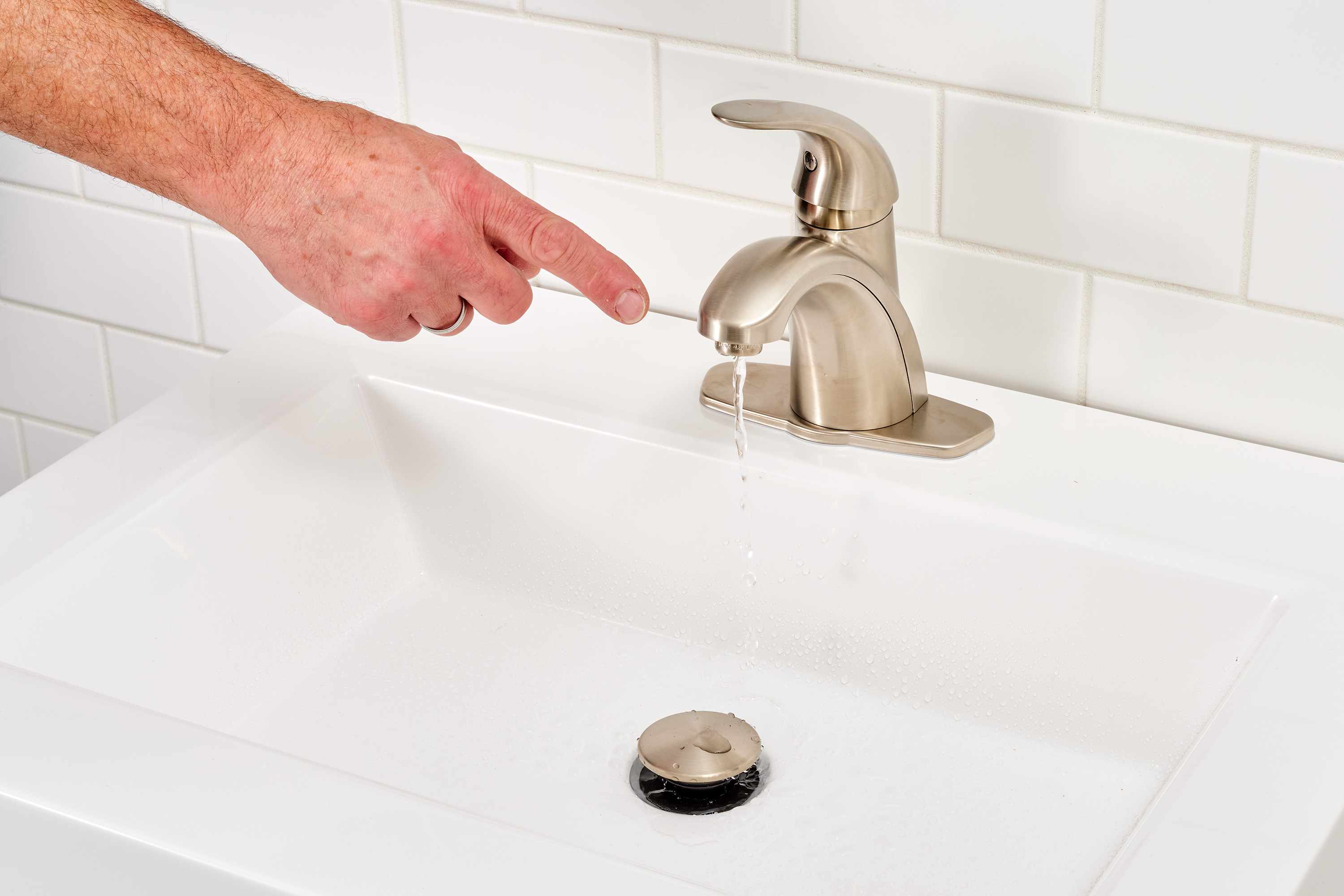

Articles
What Does A Faucet Cartridge Do
Modified: January 19, 2024
Learn what a faucet cartridge does and how it affects your plumbing system. Explore helpful articles on faucet cartridges for expert insights and troubleshooting tips.
(Many of the links in this article redirect to a specific reviewed product. Your purchase of these products through affiliate links helps to generate commission for Storables.com, at no extra cost. Learn more)
Introduction
A faucet cartridge may seem like a small and insignificant component, but it plays a crucial role in the smooth operation of your faucet. Without a properly functioning cartridge, you may experience issues like leaks, low water pressure, or even complete failure of the faucet. In this article, we will explore the purpose of a faucet cartridge, its functions, types, how it works, common issues, signs of a faulty cartridge, and steps to replace it.
When it comes to plumbing fixtures, a faucet is an essential part of any kitchen or bathroom. It provides a convenient source of water for various tasks like washing dishes, hands, or even filling up a glass. While faucets come in different designs and styles, they all rely on a cartridge to control and regulate the flow of water.
The faucet cartridge, also known as the valve cartridge, is the heart of the faucet. It acts as a control mechanism, allowing you to adjust the water temperature and flow rate with ease. The cartridge is responsible for maintaining a watertight seal and ensuring proper mixing of hot and cold water.
Now that we have a basic understanding of the importance of a faucet cartridge, let’s delve deeper into its definition and examine the specific functions it performs to keep your faucet running smoothly.
Key Takeaways:
- The faucet cartridge is the heart of your faucet, controlling water flow, temperature, and preventing leaks. Understanding its functions and recognizing signs of a faulty cartridge can help maintain a reliable and efficient faucet.
- Different types of faucet cartridges cater to various needs, from traditional compression cartridges to modern touchless faucet cartridges. Proper maintenance and timely replacement can ensure a smooth and hassle-free faucet experience.
Read more: What To Do With Printer Cartridges
Definition of a Faucet Cartridge
A faucet cartridge is a removable component that controls the flow of water in a faucet. It is typically made of durable materials such as ceramic, plastic, or brass, and is designed to withstand the constant exposure to water and the wear and tear of everyday use.
The cartridge is located inside the faucet body and serves as the main mechanism for regulating the water flow and temperature. It is responsible for controlling the opening and closing of the faucet, allowing you to adjust the flow from a gentle stream to a powerful spray.
The primary function of a faucet cartridge is to ensure a seamless and reliable water flow. It achieves this by creating a watertight seal when the faucet is closed, preventing any leaks or drips. When the faucet is opened, the cartridge allows water to pass through the spout and mix the hot and cold water, providing you with the desired water temperature.
Not only does the faucet cartridge control the water flow and temperature, but it also plays a role in conserving water. It allows for efficient water usage by providing a smooth and precise control over the flow rate, reducing water wastage.
Additionally, some faucet cartridges are designed with features like water-saving restrictors or pressure-balancing valves. These features help to optimize water usage, prevent sudden temperature fluctuations, and provide a consistent water flow, even when other fixtures in the house are being used simultaneously.
Overall, the faucet cartridge is a vital component that ensures the proper functioning of your faucet. It combines durability, reliability, and precision to provide you with a convenient and enjoyable experience every time you use your faucet.
Functions of a Faucet Cartridge
A faucet cartridge performs several important functions to ensure the smooth operation of your faucet. Let’s take a closer look at the key functions of a faucet cartridge:
1. Control Water Flow:
The primary function of a faucet cartridge is to control the flow of water. Whether you want a gentle stream for washing your face or a powerful spray for cleaning dishes, the cartridge allows you to adjust the water flow to your desired level.
2. Regulate Water Temperature:
Another crucial function of a faucet cartridge is to regulate the water temperature. By turning the faucet handle, the cartridge allows you to mix the hot and cold water and find the perfect balance for your needs.
Read more: How To Change Faucet Cartridge
3. Create a Watertight Seal:
The cartridge is responsible for creating a watertight seal when the faucet is closed. This ensures that no water leaks or drips when the faucet is not in use, helping to conserve water and prevent unnecessary wastage.
4. Prevent Sudden Temperature Fluctuations:
Some faucet cartridges are designed with pressure-balancing features. These cartridges help to prevent sudden temperature fluctuations, ensuring a consistent water temperature even when other water fixtures in the house are being used simultaneously.
5. Reduce Water Wastage:
Faucet cartridges with water-saving restrictors can help reduce water wastage. These restrictors limit the water flow, promoting water conservation without compromising the functionality of the faucet.
6. Smooth Handle Operation:
A well-functioning faucet cartridge ensures smooth and effortless handle operation. It allows for easy adjustment of water flow and temperature, providing a convenient and comfortable user experience.
Overall, the functions of a faucet cartridge work together to provide you with control, convenience, and efficiency when using your faucet. It is an essential component that ensures the optimal performance of your faucet and enhances your overall experience in the kitchen or bathroom.
Read more: How To Replace A Kitchen Faucet Cartridge
Types of Faucet Cartridges
There are several types of faucet cartridges available, each with its own unique design and functionality. Let’s explore some of the most common types of faucet cartridges:
1. Compression Cartridge:
The compression cartridge is the oldest and simplest type of faucet cartridge. It consists of a rubber washer that presses against a metal seat to control the water flow. When the handle is turned, the washer moves up and down, allowing water to pass through or blocking the flow. While durable, compression cartridges are prone to leaking and require regular maintenance.
2. Ceramic Disc Cartridge:
The ceramic disc cartridge is a popular choice in modern faucets. It features two ceramic discs that slide against each other to regulate the water flow. The discs have holes that align to allow water to pass through when the faucet handle is turned. Ceramic disc cartridges are durable, reliable, and provide smooth operation with minimal maintenance.
3. Ball Cartridge:
The ball cartridge is commonly found in single-handle faucets. It consists of a rounded ball with multiple chambers and slots that control the water flow and temperature. As the handle is moved, the ball rotates and aligns the chambers with the appropriate water supply lines. Ball cartridges are known for their smooth operation and ease of use.
Read more: How To Replace A Shower Faucet Cartridge
4. Cartridge with Built-in Mixing Valve:
Some faucet cartridges include a built-in mixing valve to provide precise temperature control. These cartridges are commonly used in thermostatic shower systems or faucets. The mixing valve adjusts the hot and cold water proportions to maintain a constant temperature, even when there are fluctuations in water pressure.
5. Cartridge for Touchless Faucets:
Touchless faucets use a special type of cartridge that incorporates motion sensors to activate the flow of water. These cartridges are typically electronic and require batteries or electrical connections. They provide convenience and hygiene by allowing water flow without the need to touch the faucet handle.
It’s important to note that the availability of different types of cartridges may vary depending on the faucet brand and model. It’s always recommended to refer to the manufacturer’s specifications when selecting a replacement cartridge for your faucet.
By understanding the different types of faucet cartridges, you can choose the right one for your needs and ensure the optimal performance of your faucet.
How Does a Faucet Cartridge Work?
A faucet cartridge works by controlling the water flow and temperature, allowing you to adjust these settings according to your preference. Let’s explore the inner workings of a faucet cartridge:
1. Water Flow Control: When you turn the faucet handle, it operates a mechanism within the cartridge that adjusts the water flow. Depending on the type of cartridge, this mechanism may involve the movement of rubber washers, ceramic discs, or a rotating ball. By moving the handle back and forth, you can open or close the passages within the cartridge, regulating the flow of water from the spout.
2. Mixing Hot and Cold Water: Faucet cartridges also play a crucial role in mixing hot and cold water to achieve the desired temperature. In cartridges with separate hot and cold water supply lines, the cartridge balances the flow of both temperatures by adjusting the alignment of the ceramic discs, sealing off or allowing passage for each water source. This allows for precise control over the temperature as you move the handle.
3. Watertight Seal: One of the key functions of a faucet cartridge is to create a watertight seal when the faucet is closed. This prevents any water from leaking or dripping when the faucet is not in use. Cartridges achieve this by using rubber washers or a combination of ceramic discs that press against each other tightly, cutting off the water supply when the faucet handle is in the “off” position.
4. Durable Operation: Faucet cartridges are designed to be durable and long-lasting. The materials used, such as ceramic, rubber, or brass, are selected for their ability to withstand the constant exposure to water and the wear and tear of everyday use. This ensures that the cartridge can operate smoothly and reliably over an extended period.
In summary, a faucet cartridge works by controlling the water flow and temperature through mechanisms like rubber washers, ceramic discs, or a rotating ball. These components allow for precise control and adjustment of water flow and temperature, while also ensuring a watertight seal when the faucet is closed. The durability of the cartridge materials ensures long-lasting and reliable performance for your faucet.
Common Issues with Faucet Cartridges
While faucet cartridges are designed to be durable and reliable, they can still experience issues over time due to wear and tear or other factors. Here are some common issues that can cartridge may have become damaged or worn, affecting their ability to properly control the hot and cold water mix.
Read more: How To Replace A Delta Faucet Cartridge
5. Difficulty in Operating Handle:
If you find that the handle of your faucet is difficult to turn or gets stuck, it could indicate a problem with the cartridge. This issue can occur when the internal components of the cartridge become worn or corroded, restricting the movement of the handle.
6. Leaking or Dripping Faucet:
A leaking or dripping faucet is a frustrating issue that often stems from a faulty cartridge. Over time, the rubber seals or ceramic discs within the cartridge may wear out, resulting in water leaks or drips from the spout. Leaks can also occur if the cartridge is not properly installed or if the cartridge housing is damaged.
7. Low Water Pressure:
If you notice a decrease in water pressure, the cartridge could be the culprit. Accumulated mineral deposits or debris can clog the small openings or passages within the cartridge, restricting the flow of water. This can lead to reduced water pressure or uneven water flow from the faucet.
8. Uneven Water Temperature:
A malfunctioning cartridge can cause issues with maintaining a consistent water temperature. If you experience sudden fluctuations or inconsistent hot and cold water mix, it could indicate a problem with the cartridge’s ability to properly balance and regulate the water flow.
Read more: How To Replace Moen Kitchen Faucet Cartridge
9. Continuous Running Water:
In some cases, a faulty cartridge may cause the faucet to continuously run, even when the handle is in the “off” position. This can occur when the cartridge fails to create a tight seal, allowing water to pass through and flow constantly.
If you encounter any of these issues with your faucet, it is likely that the cartridge needs attention or replacement. Consulting a professional plumber or referring to the manufacturer’s instructions can help determine the exact cause of the problem and provide the appropriate solution.
Regular maintenance, such as cleaning and lubricating the cartridge, can help prolong its lifespan and prevent some of these common issues. However, there may come a time when a replacement cartridge is necessary to restore the proper functionality of your faucet.
Signs of a Faulty Faucet Cartridge
A faulty faucet cartridge can cause various problems with the performance of your faucet. It’s important to recognize the signs of a faulty cartridge to address the issue promptly. Here are some common signs that indicate a faulty faucet cartridge:
1. Leaking or Dripping Faucet:
If you notice water leaking or dripping from your faucet, it may indicate a malfunctioning cartridge. The rubber seals or ceramic discs within the cartridge can wear out over time, resulting in water leaks and drips from the spout. Even a small, steady drip can waste a significant amount of water if left unaddressed.
2. Difficulty in Adjusting Water Flow or Temperature:
When a cartridge is faulty, you may experience difficulty in adjusting the water flow or temperature. The handle may become stiff, loose, or get stuck in one position, making it challenging to find the desired water flow or achieve the right balance between hot and cold water.
Read also: 11 Amazing Moen Faucet Cartridge for 2024
3. Uneven Water Flow:
A faulty cartridge can lead to uneven water flow from the faucet. You may notice reduced water pressure or water coming out in spurts rather than a steady stream. This can make tasks like washing dishes or hands less efficient and frustrating.
4. Inconsistent Water Temperature:
If you are experiencing sudden temperature fluctuations or inconsistent hot and cold water mix, it may indicate a problem with the cartridge. The cartridge is responsible for regulating and balancing the flow of hot and cold water. A faulty cartridge may fail to maintain a consistent water temperature, resulting in unpleasant surprises while using the faucet.
5. Continuous Running Water:
If the water continues to run even when the faucet handle is in the “off” position, it is a clear indication of a faulty cartridge. The cartridge is responsible for creating a watertight seal when the faucet is closed. When this seal fails, water can continue to flow, leading to water wastage and potential damage.
If you notice any of these signs, it is advisable to address the issue with your faucet cartridge as soon as possible. Depending on the severity of the problem, you may need to repair or replace the cartridge to restore the proper functionality of your faucet.
Keep in mind that different faucet models and types may have specific signs of cartridge issues. It’s always recommended to consult the manufacturer’s instructions or seek professional help for an accurate diagnosis and appropriate solution.
How to Replace a Faucet Cartridge
Replacing a faulty faucet cartridge can help restore the proper functionality of your faucet and resolve issues like leaks, dripping, or difficulty in adjusting water flow and temperature. Here is a step-by-step guide on how to replace a faucet cartridge:
1. Gather the Required Tools:
Before starting the replacement process, gather the necessary tools, such as a screwdriver, adjustable wrench, pliers, and a new cartridge that is compatible with your faucet model. It’s important to ensure you have the correct replacement cartridge to avoid any compatibility issues.
2. Turn Off the Water Supply:
First, turn off the water supply to the faucet. This can usually be done by shutting off the water valves located beneath the sink. Make sure the water flow is completely stopped before proceeding with the cartridge replacement process.
3. Remove the Handle and Trim:
Next, remove the faucet handle and any decorative trim pieces that cover the cartridge. These may be held in place by screws or simply snapped into place. Use a screwdriver or pliers to carefully remove them, being cautious not to damage the surrounding components.
4. Unscrew the Cartridge Retaining Nut:
Locate the cartridge retaining nut and use an adjustable wrench to unscrew it in a counterclockwise direction. This nut holds the cartridge in place. Once loosened, gently pull the cartridge out of the faucet body.
Read more: What Printer Cartridge Do I Need
5. Install the New Cartridge:
Take the new cartridge and carefully insert it into the faucet body, aligning the notches or grooves with the corresponding slots. Make sure it is positioned securely and properly seated within the faucet body.
6. Reattach the Cartridge Retaining Nut:
Once the new cartridge is in place, reattach the cartridge retaining nut by screwing it back on in a clockwise direction. Ensure it is tightened securely, but be careful not to overtighten and damage the cartridge or other components.
7. Reassemble the Faucet:
Reattach the decorative trim pieces and handle in the reverse order of how you removed them. Tighten any screws or snaps to secure them in place.
8. Turn On the Water Supply and Test:
Finally, turn on the water supply by reopening the shut-off valves. Slowly turn the faucet handle to allow water to flow through the new cartridge. Check for any leaks, dripping, or other issues. Adjust the water flow and temperature to ensure everything is functioning properly.
If you are unsure about any step in the process or encounter difficulties, it is recommended to consult the manufacturer’s instructions or seek the assistance of a professional plumber. They can provide expert guidance and ensure the proper replacement of the faucet cartridge.
Remember, proper installation and regular maintenance of the faucet cartridge can extend its lifespan and prevent future issues, so it’s important to follow proper care and usage instructions provided by the manufacturer.
Read more: What Does Faucet Mean
Conclusion
Faucet cartridges play a crucial role in the smooth operation of your faucet, allowing you to control the water flow and temperature with ease. Understanding the functions and types of faucet cartridges is essential in identifying and addressing issues that may arise with your faucet.
From compression cartridges to ceramic disc cartridges, each type has its own unique design and functionalities that cater to different needs and preferences. By recognizing the signs of a faulty faucet cartridge, such as leaks, difficulty in adjusting water flow, or inconsistent water temperature, you can take the necessary steps to resolve the problem and restore the functionality of your faucet.
Replacing a faulty faucet cartridge involves gathering the right tools, shutting off the water supply, removing the handle and trim, unscrewing the cartridge retaining nut, installing the new cartridge, reassembling the faucet, and finally testing the water flow and temperature. It is always advisable to consult the manufacturer’s instructions or seek professional assistance for a smooth and accurate replacement process.
Maintaining and caring for your faucet cartridge is important to ensure its longevity and optimal performance. Regular cleaning and lubrication can help prevent mineral deposits and debris buildup, allowing for smooth operation and reducing the risk of issues.
In conclusion, knowing the functions of a faucet cartridge, recognizing common issues, and understanding how to replace a faulty cartridge can help you maintain a reliable and efficient faucet in your kitchen or bathroom. By giving proper attention to your faucet cartridge, you can enjoy a consistent water flow, precise temperature control, and a hassle-free experience every time you use your faucet.
Frequently Asked Questions about What Does A Faucet Cartridge Do
Was this page helpful?
At Storables.com, we guarantee accurate and reliable information. Our content, validated by Expert Board Contributors, is crafted following stringent Editorial Policies. We're committed to providing you with well-researched, expert-backed insights for all your informational needs.
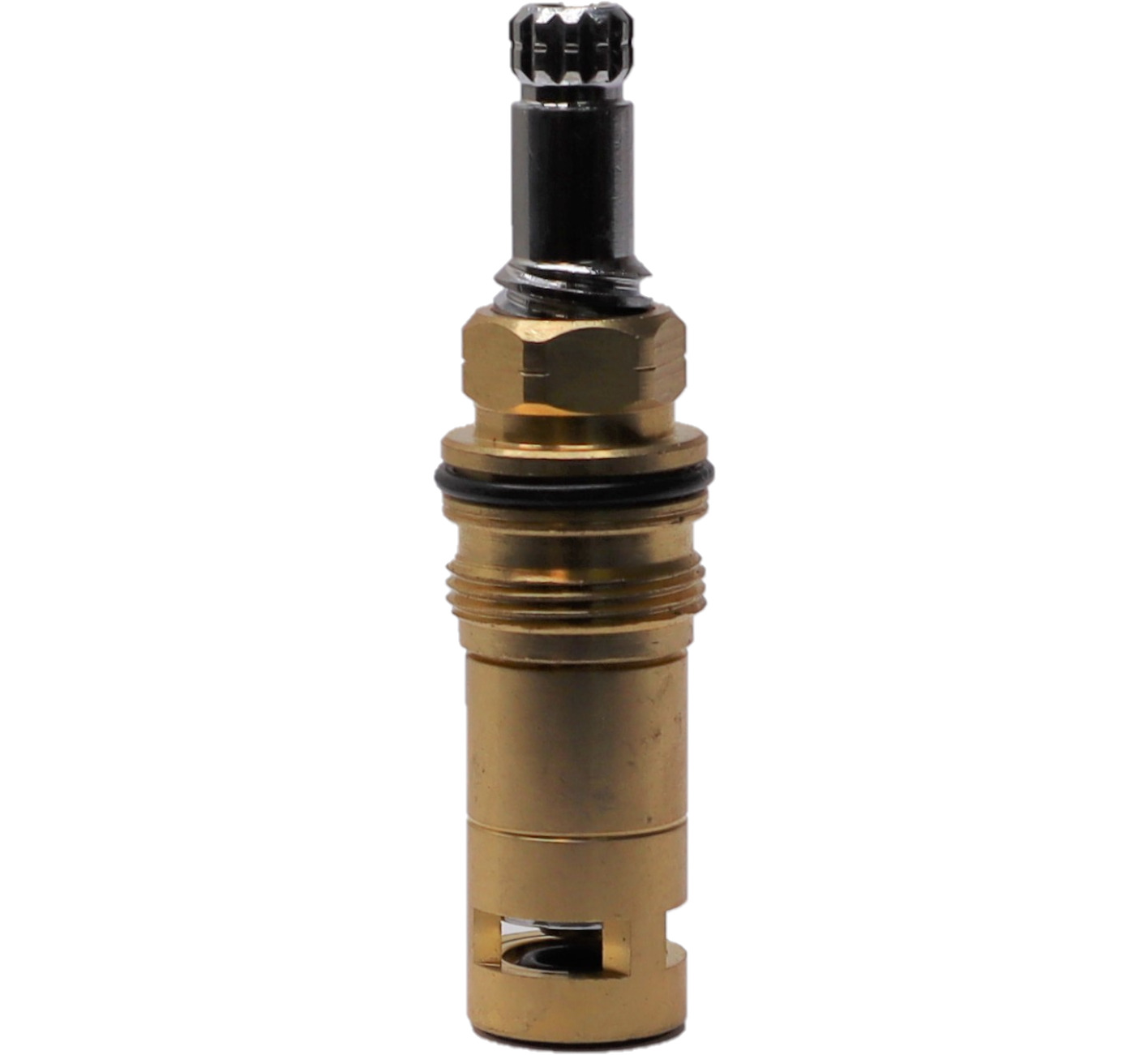
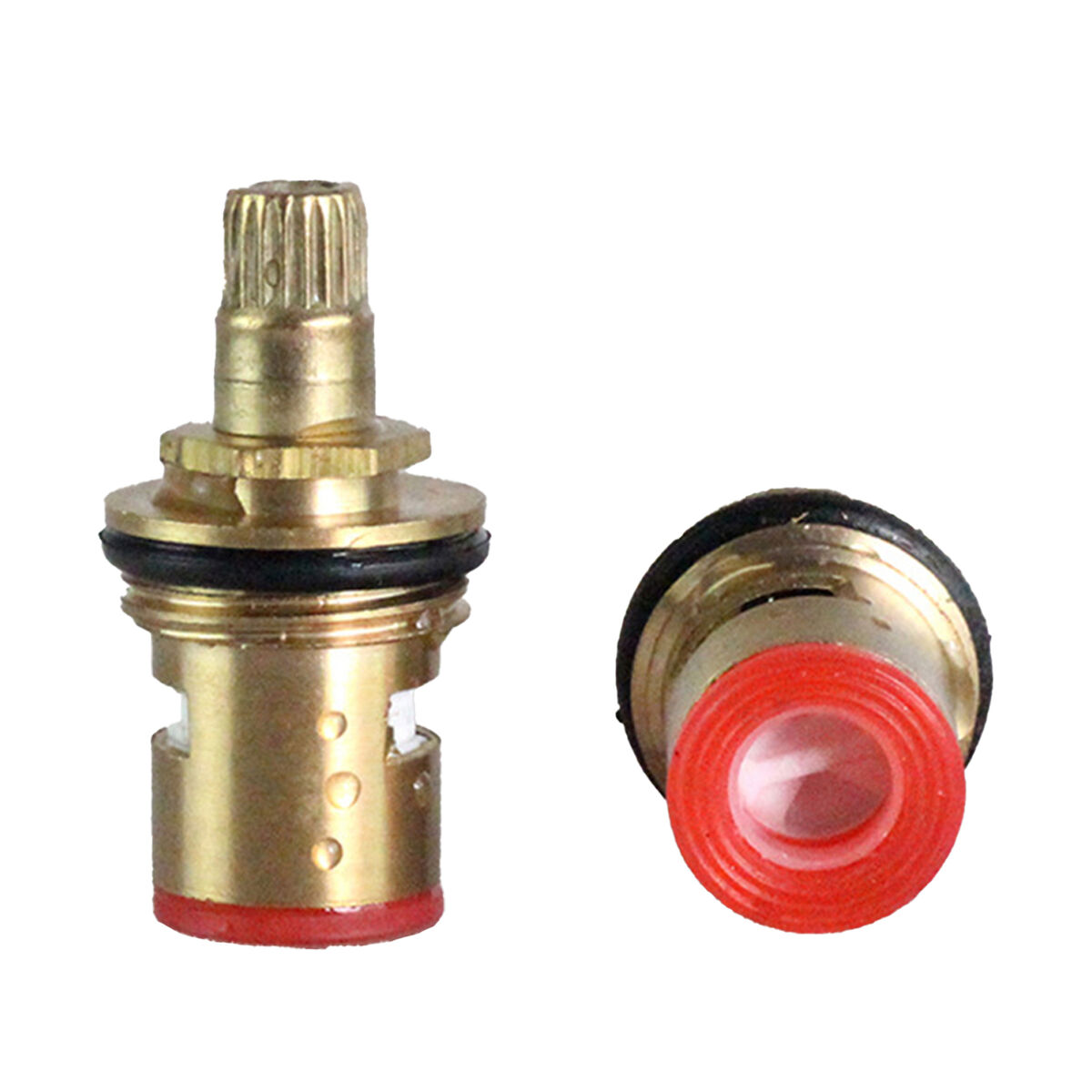
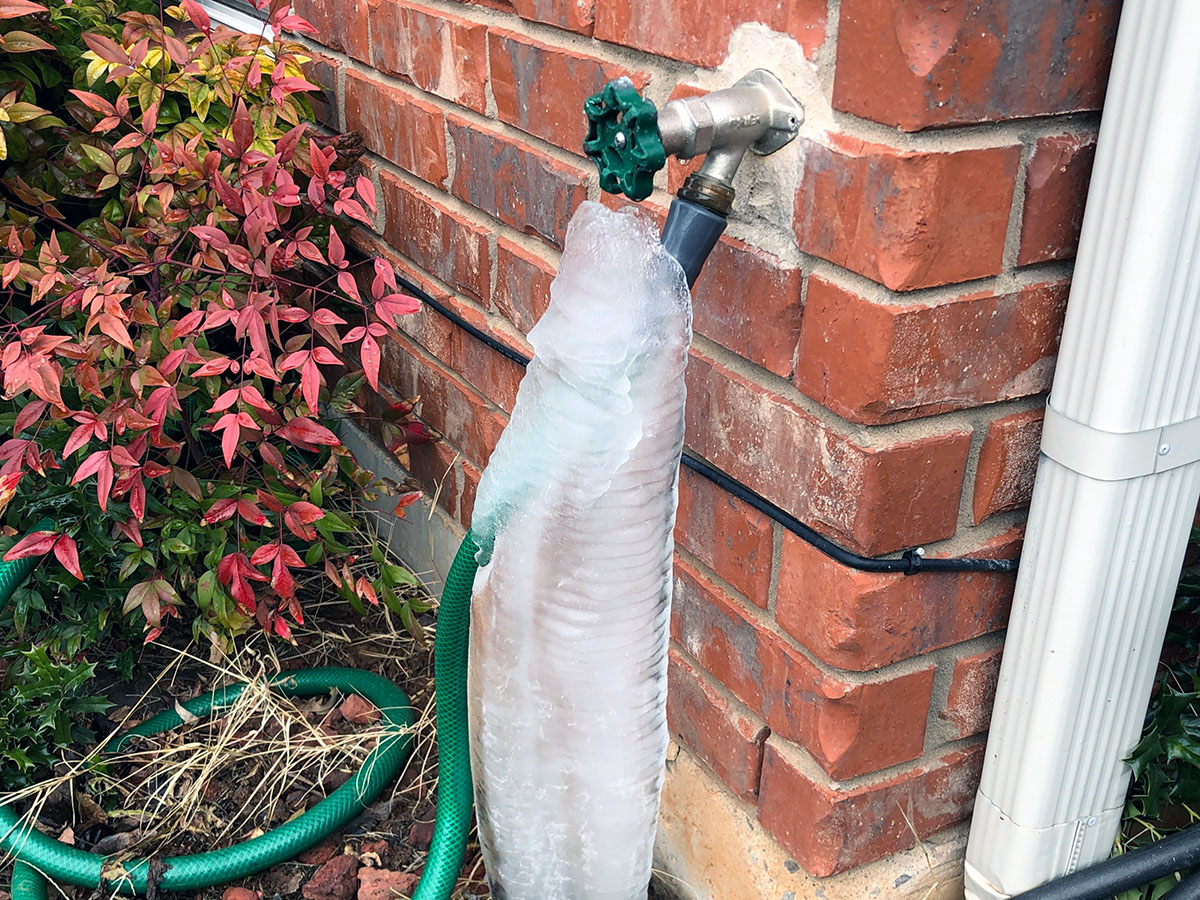
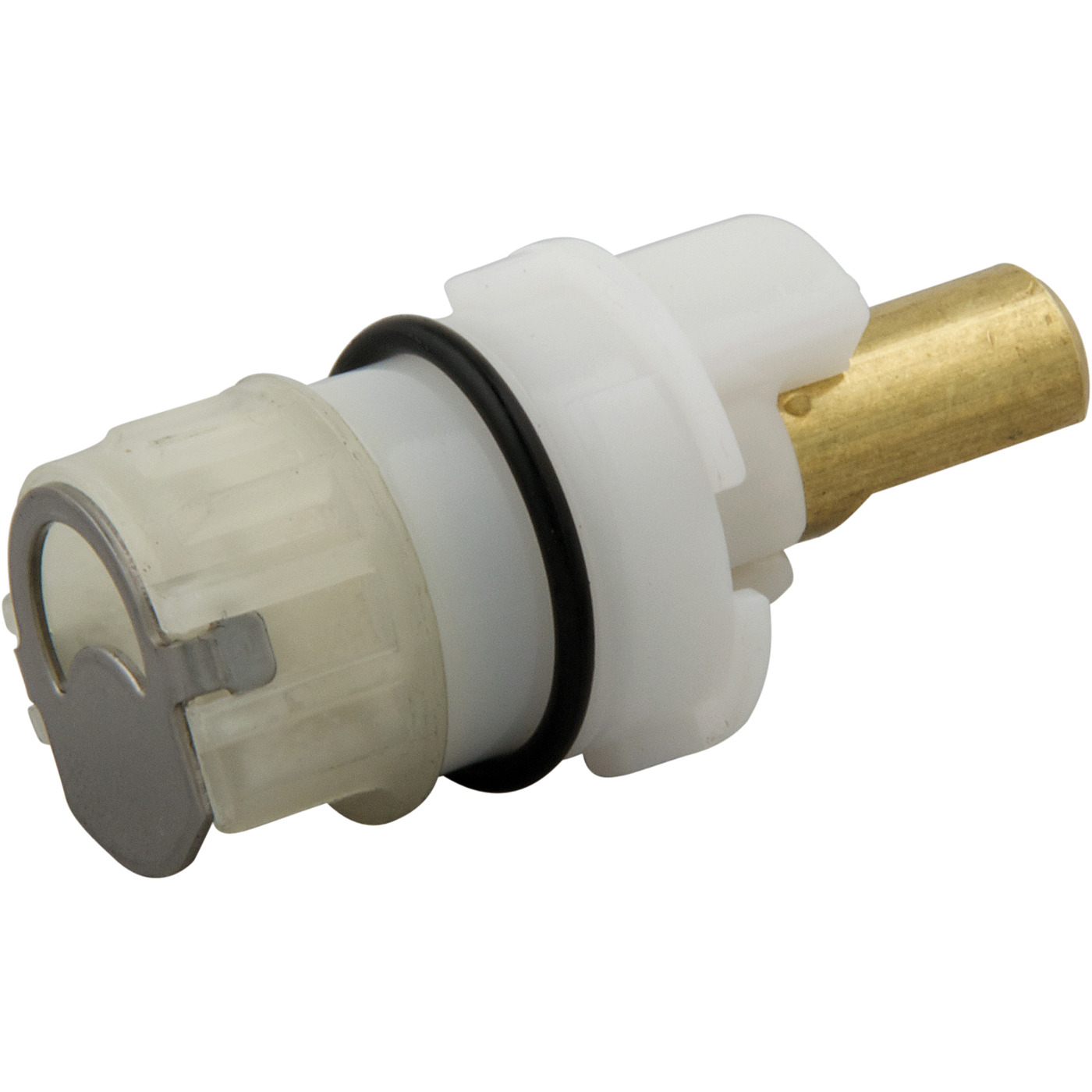
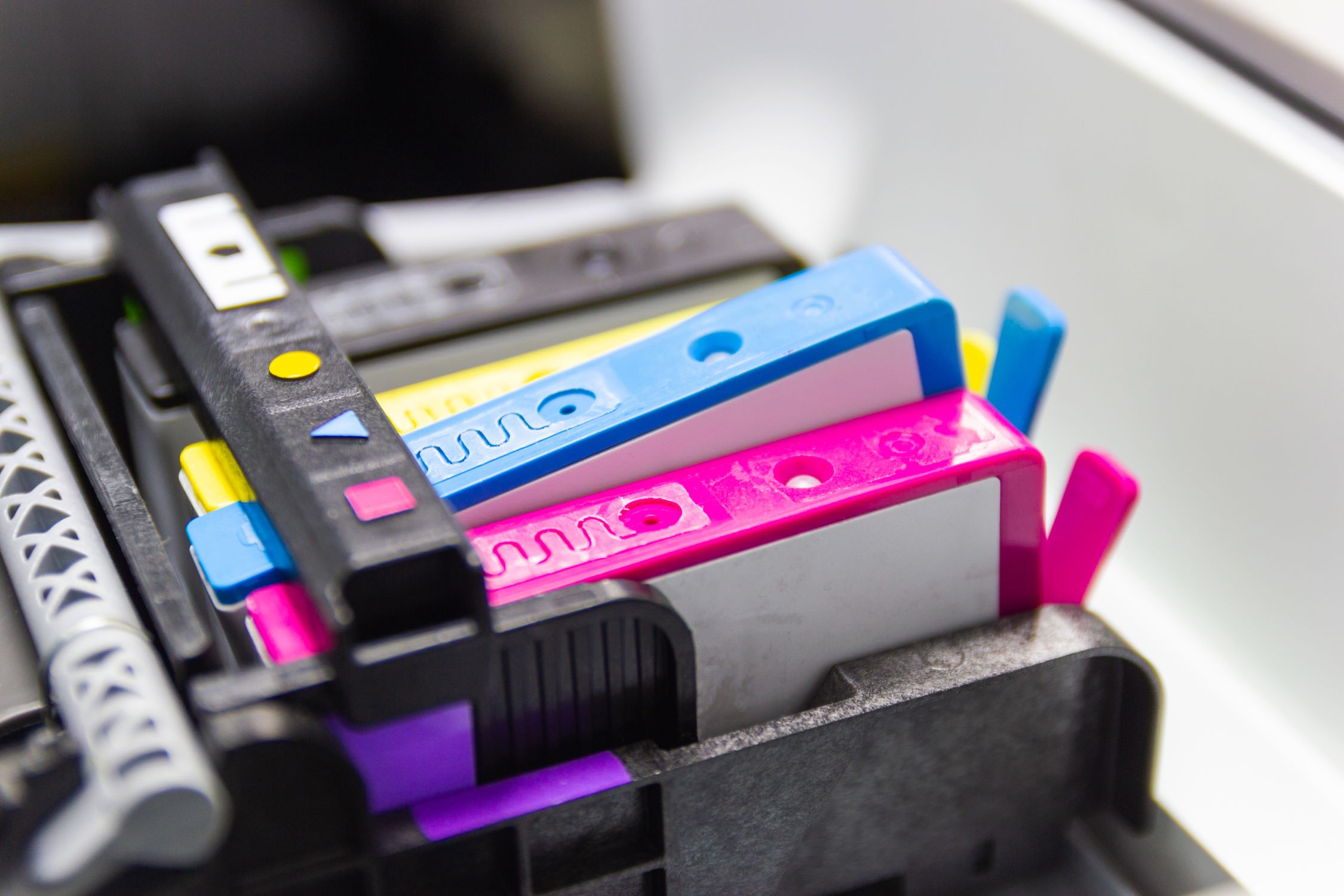
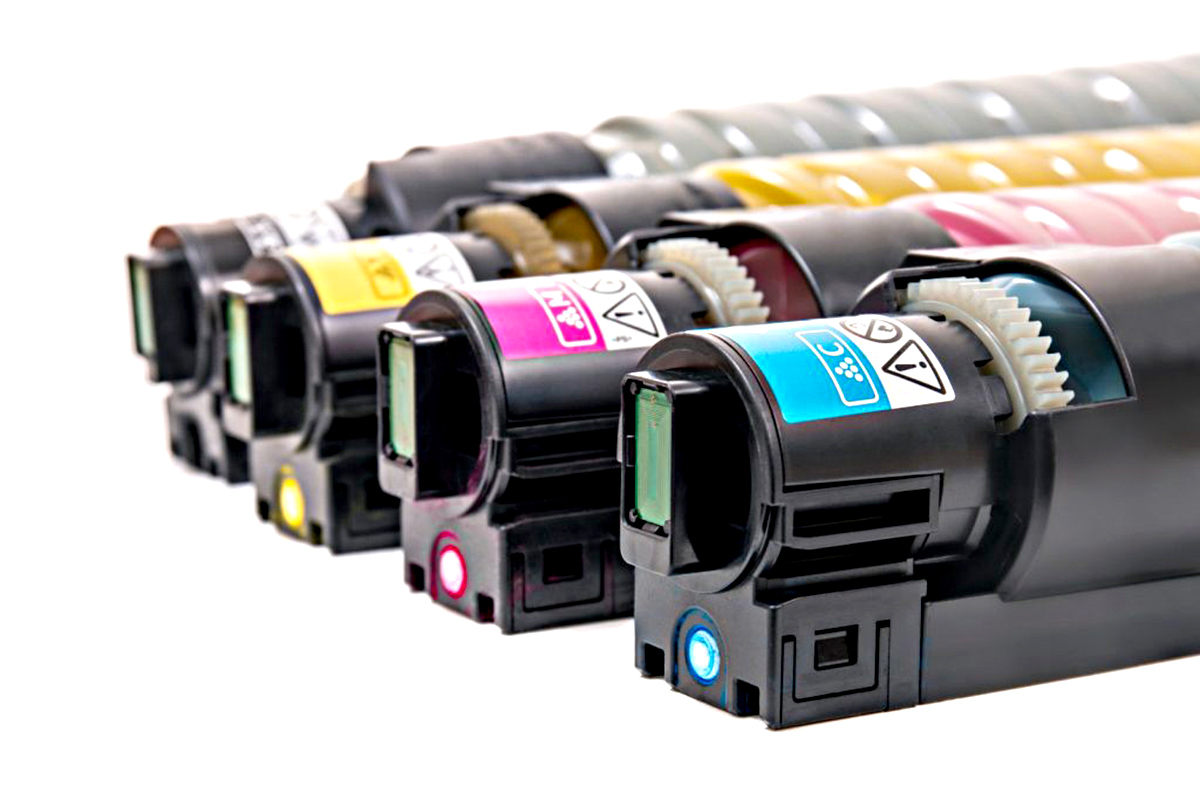

0 thoughts on “What Does A Faucet Cartridge Do”